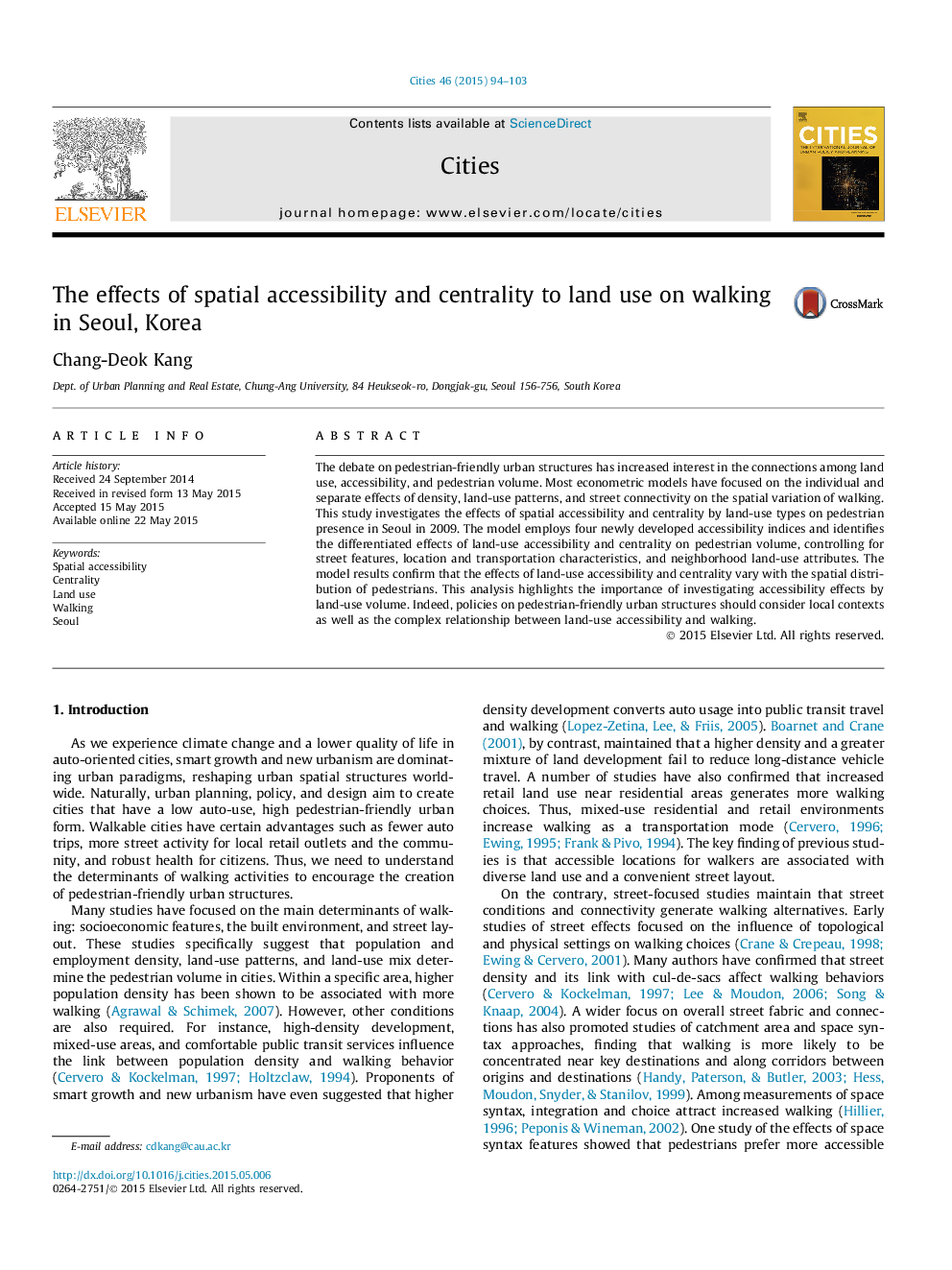| Article ID | Journal | Published Year | Pages | File Type |
|---|---|---|---|---|
| 1008263 | Cities | 2015 | 10 Pages |
•We investigated the effects of spatial accessibility and centrality to land use on walking in Seoul, Korea.•Multilevel regression models confirmed that effects on walking varied with land use and street configuration.•Gravity, Straightness, and Closeness to commercial space generated remarkable effects on walking.
The debate on pedestrian-friendly urban structures has increased interest in the connections among land use, accessibility, and pedestrian volume. Most econometric models have focused on the individual and separate effects of density, land-use patterns, and street connectivity on the spatial variation of walking. This study investigates the effects of spatial accessibility and centrality by land-use types on pedestrian presence in Seoul in 2009. The model employs four newly developed accessibility indices and identifies the differentiated effects of land-use accessibility and centrality on pedestrian volume, controlling for street features, location and transportation characteristics, and neighborhood land-use attributes. The model results confirm that the effects of land-use accessibility and centrality vary with the spatial distribution of pedestrians. This analysis highlights the importance of investigating accessibility effects by land-use volume. Indeed, policies on pedestrian-friendly urban structures should consider local contexts as well as the complex relationship between land-use accessibility and walking.
